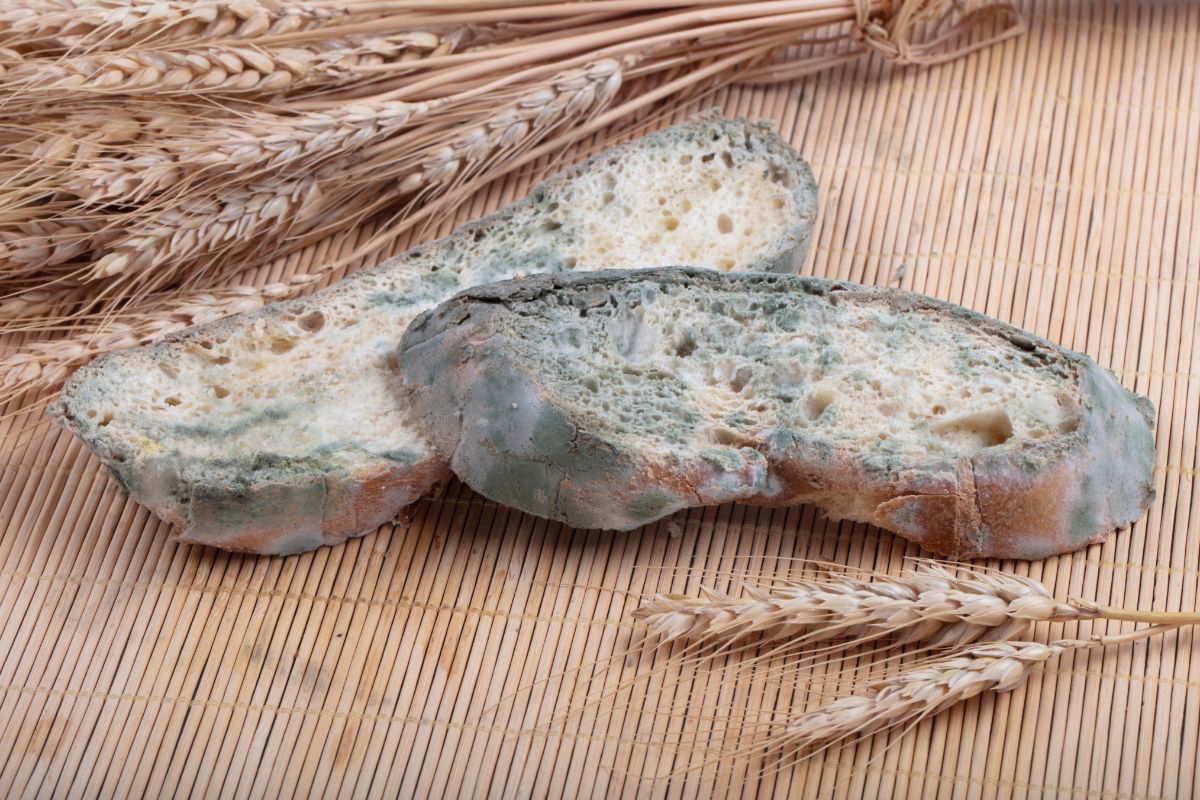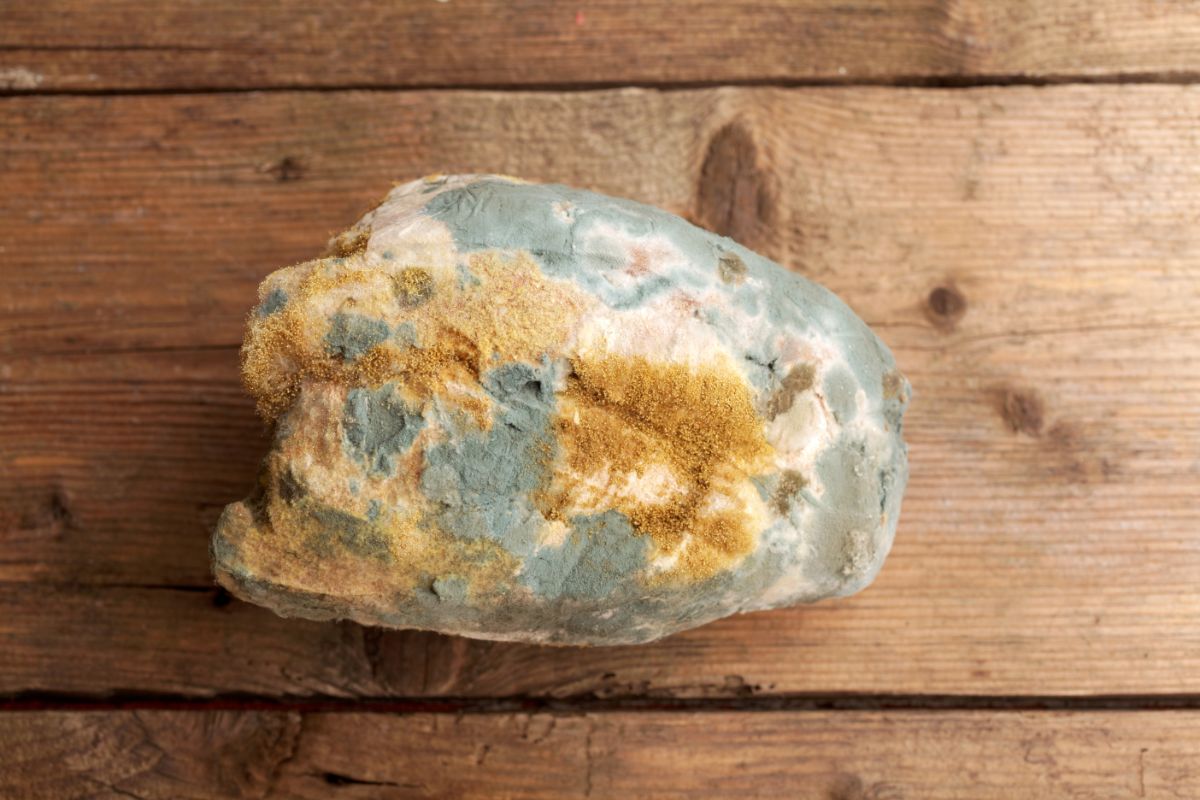Does bread go bad? It can, and more importantly, it can go bad in a number of ways. We’ll discuss tips for knowing when bread has gone bad and how to extend its shelf life.

How do expiration dates relate to when the bread goes bad?
Modern factory-made bread contains preservatives. This means the expiration date on it is fairly accurate. You can eat bread that has been inside the pantry wrapped securely in the wrapper on the expiration date.
You can probably eat it up to two days after the expiration date. You can slow the growth of mold and bacteria by storing them in the fridge, but this dries it out. It would be better to freeze it, then thaw it so it is fresh and fluffy when you want to eat it. However, this is only true of fresh bread.
Pre-baked bagels will last two or three days if you just dumped them in a bag and brought them home. Pre-packaged bagels will last up to a week in the plastic wrapper. They can last longer in the fridge, though that dries them out. Freeze them, and they’ll last six months.
Frozen bread dough will last in the fridge for a couple of days and at room temperature for less than one day. It can be frozen, and then it will last up to a year in the freezer. Dough biscuits used to make rolls in the oven will go bad if left at room temperature for two hours, but it can last a week in the fridge. The wheat won’t go bad in that time. It is the oils that will go rancid.
Bread crumbs will last up to six months if stored in an air-tight container. If you freeze them, they’ll last up to six months.
In every case, the expiration “timer” resumes once you unfreeze it. Note that if the dough goes bad, you could be made ill by eating it after you cook it. And if the bread is already bad, freezing it won’t fix it – but freezer burn can render it inedible.
If bread is stale, does that mean it has gone bad?
Stale bread is simply dried-out bread; it has become hard. Stale bread can be eaten.
A common solution to dealing with stale bread was to break it up and cook it with meat and vegetables to let those juices soften it back up. (That’s where stuffing for your chicken came from.)
What do you do if there is mold on the bread?
If the bread otherwise smells fine, you can in theory cut the moldy part off and eat the rest. This is only an option if the rest of the bread smells OK and there are no other discolored areas. Check the bottom of the load before you assume that cutting off the moldy end is the end of it. However, if in doubt, throw it out, because most of us aren’t forced to choose between safe food and eating.

This advice is only true of softer bread products. If you’re dealing with a bag of croutons or crackers and some of them have mold on them, discard the whole batch. After all, the dried bread products resist mold because they have dried out. And if one is moldy, the spores have already contaminated the rest of it. Don’t even try to sort good from the bad.
If the bread smells “sour”, don’t do anything except throw it away. For example, regular bread that smells like sourdough is dangerous to eat and should be discarded.
If it smells spoiled in any other way, get rid of it. Be careful not to sniff it too close so you don’t inhale mold spores. Instead, smell it with your face well back from the bread. If it smells that far back, you know it is bad.
How can you extend the life of bread?
If you have fresh bread, you can freeze it. It can remain frozen for up to three months without hurting its quality. After six months in the freezer, and it is still safe to eat but the texture is not going to be as good. At any point, take it out, thaw it, and the clock restarts.
If you freeze bread right after it cooled from the oven, it is then good for days as long as there are preservatives in the bread. Freeze bread you picked up at the store, and it will be good for a week or more after it thaws.
In general, pre-made baked goods can sit in the freezer for six months without any problem as long as it is protected from freezer burn. Wrap it in freezer wrap or aluminum foil to protect it from freezer burn or becoming freeze-dried. That’s worse than being stale.
Some bread products shouldn’t be frozen because that causes them to deteriorate. For example, croutons can be made from dried bread, but they’ll typically be inedible if you refrigerate or freeze them. Biscuit dough containing a lot of yeast shouldn’t be frozen, either, because this kills the yeast.
How can you store bread to maximize its shelf life?
There’s a reason they wrap freshly baked bread from the bakery in paper bags. This allows the bread to breathe while protecting it from the air. This prevents moisture from building up inside the bag, fostering mold growth.
Bread that comes in a plastic bag should be kept in the plastic bag. Don’t open it until you’re ready to use it, and keep the bag close as much as possible once you open it. Use the twist tie to securely close it, rather than folding it over the end of the bag.
Store the bread in a cool, dry area like a breadbox or dark pantry.
However, you shouldn’t store it in the fridge. The colder air there will dry it out. You’ll get bread that is stale faster than if it was kept at room temperature. For example, white bread stored the right way will last up to a week. Put it in the fridge, and it may last three to four days before it turns stale.
